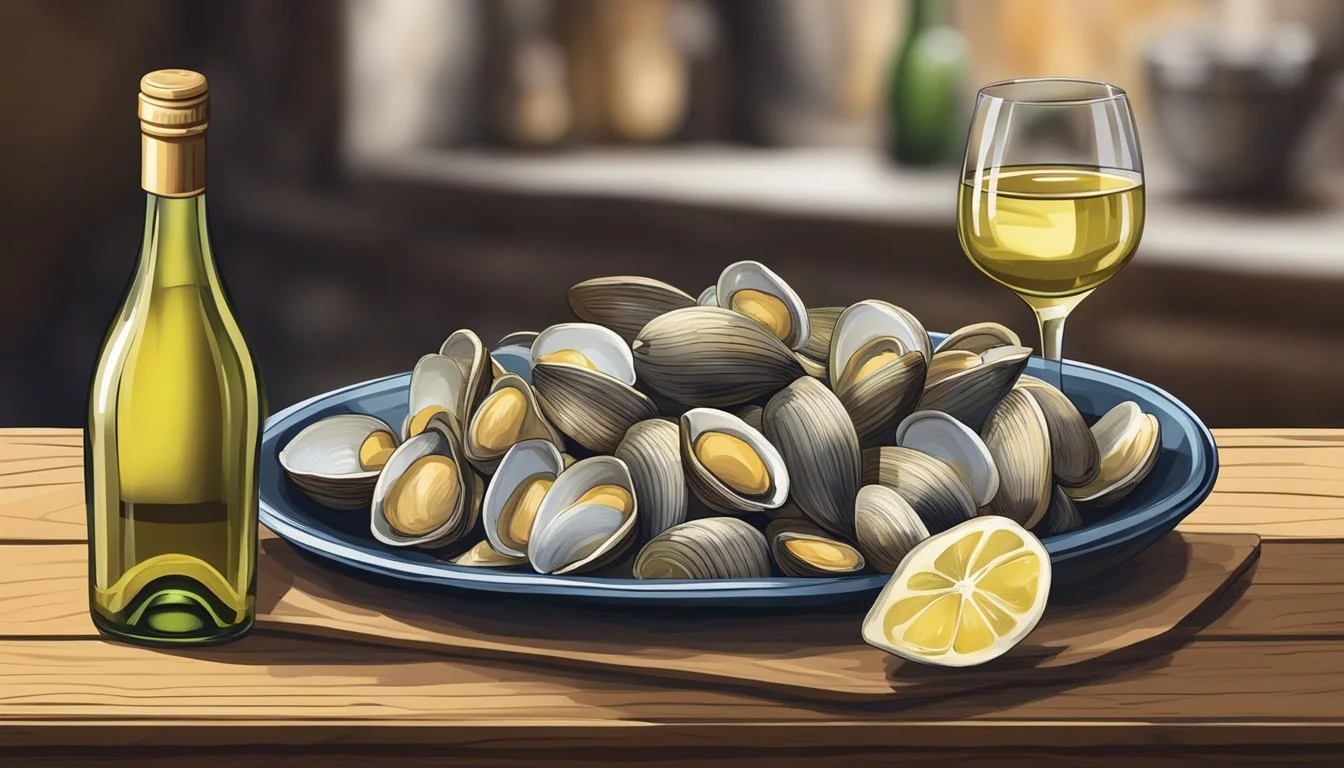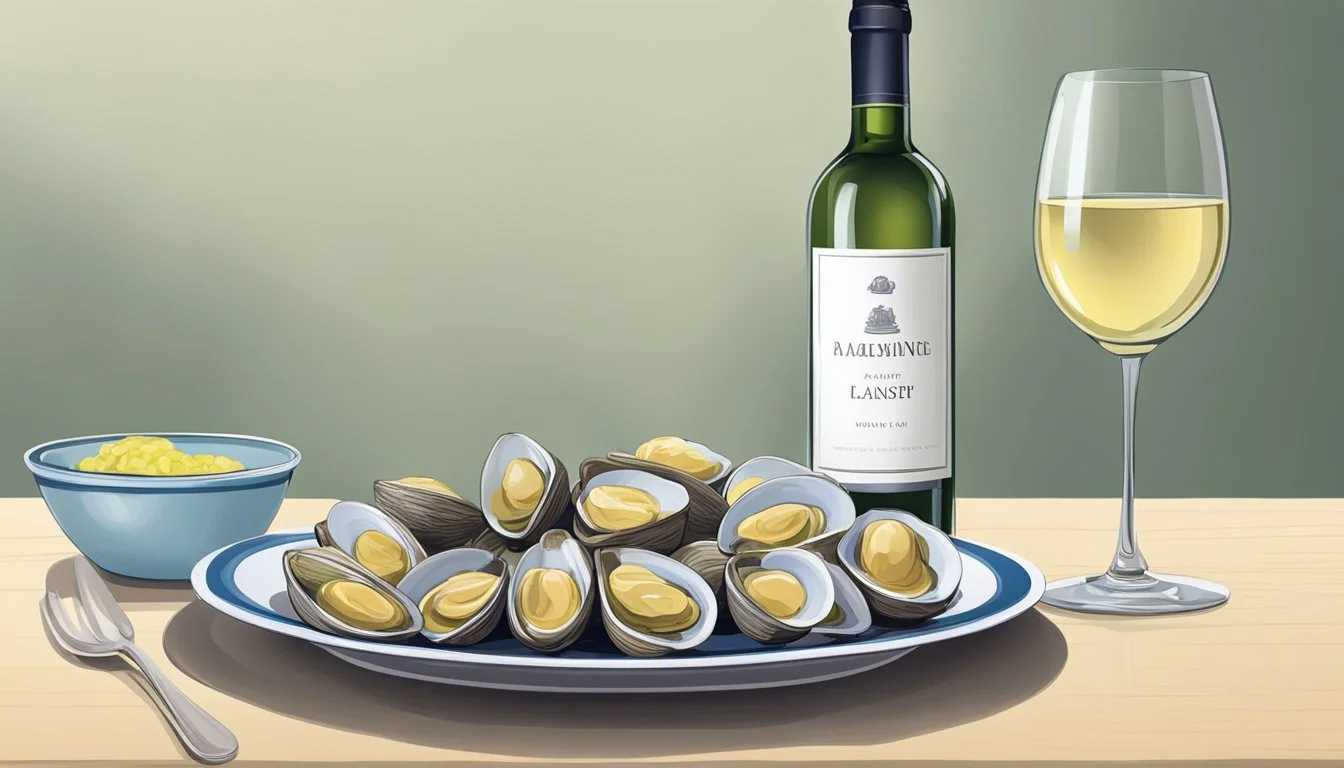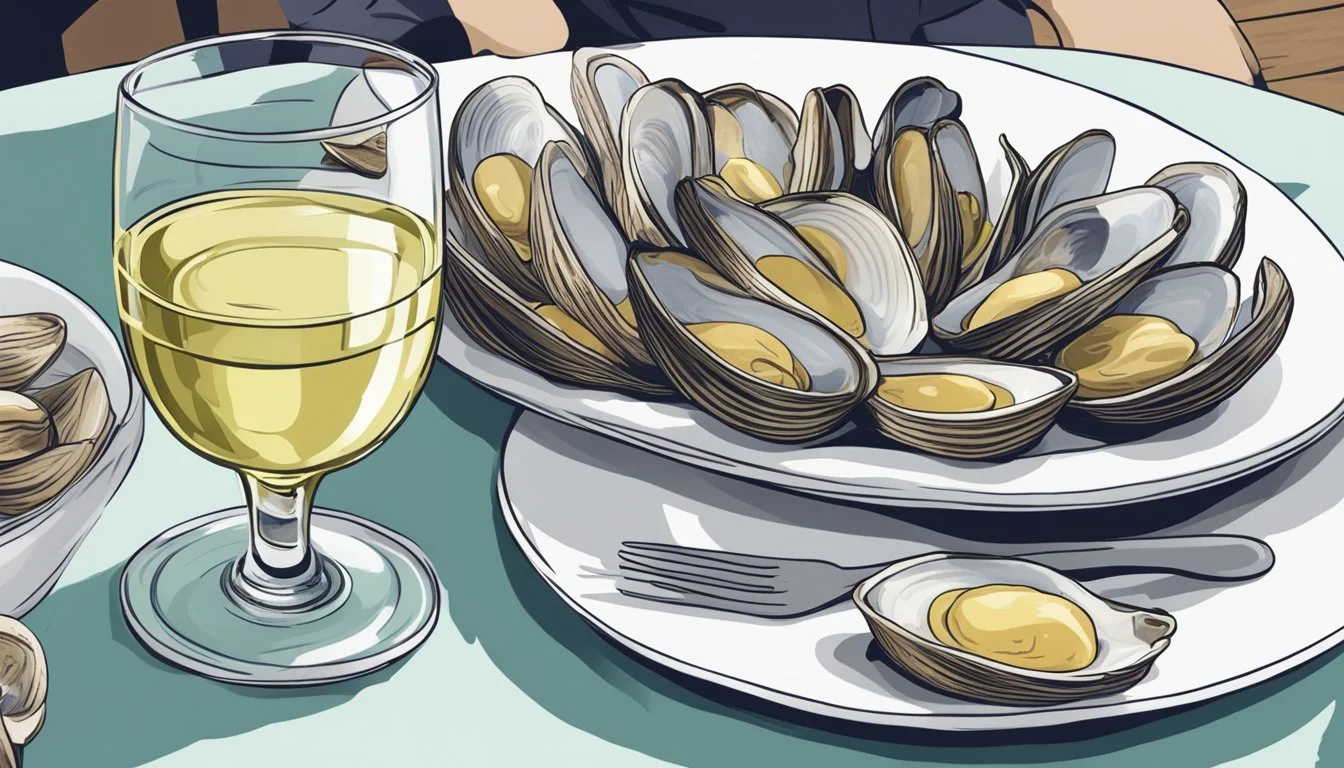What Wine Goes Well with Clams?
Pairing Seafood with the Perfect Vino
Selecting the right wine to accompany clams (What wine goes well with clams?) can elevate a simple seafood (What wine goes well with seafood?) dish to a memorable dining experience. The salinity and delicate flavor of clams make them an excellent partner for various wines. Crisp white wines, in particular, are celebrated for their ability to complement the rich flavors of clams. Wines such as Sauvignon Blanc, Pinot Gris, and Albariño are known for their bright acidity and citrus notes, which can cleanse the palate and enhance the natural brininess of the seafood.
Light-bodied red wines can also pair well with clam dishes, offering a more robust encounter. A slightly chilled Pinot Noir, with its subtle fruitiness and gentle tannins, provides a counterpoint to the tenderness of the clams without overpowering their flavor. This pairing works especially well with tomato-based clam dishes, where the acidity of both the wine and the sauce creates a harmonious blend on the palate.
In cooking, clams are frequently simmered in white wine, which infuses them with a complex flavor profile and creates a sauce that's enriched by the essence of the wine used. Dry white wines, often those same varieties that pair well for drinking, like Chardonnay and Vermentino, excel in such preparations. Their dryness and crispness complement the seafood's taste, and the alcohol content helps to concentrate the flavors during the cooking process.
Understanding Clams
To make an informed choice about wine pairings, one must first understand the differences in clam varieties, the various methods of preparation, and the distinctive flavor profiles they present.
Types of Clams
There are numerous types of clams available, each with its own texture and taste. The most commonly consumed varieties include:
Manila clams: Often found in Pacific waters, they are sweet and slightly nutty.
Littleneck clams: Smaller and tender, littlenecks offer a brinier flavor which is well-suited for pairing with wine.
Preparation Methods
Clams can be prepared in various ways, affecting the final flavor:
Steamed clams: This method preserves the natural flavors, creating a simple yet succulent dish.
Clams in pasta (What wine goes well with pasta?) or stews: Here, clams are combined with other ingredients, which can modify their inherent taste and texture.
Clam Flavor Profiles
The flavor profile of clams is diverse and depends heavily on the type and preparation:
Salty and briny: Most clams have a taste reminiscent of the sea.
Sweetness: Varieties like Manila clams exhibit a notable sweetness.
Texture: Clams range from tender to chewy, affecting the overall eating experience.
When selecting a wine, these flavor aspects should be taken into account to achieve the best pairing.
Basics of Wine Pairing
Selecting an appropriate wine to complement clams involves understanding the interaction of flavor profiles and the structural elements of the wine. This section details essential concepts that guide pairing decisions and enhance the dining experience.
Elements of Wine Tasting
When tasting wine, one should consider the body, tannins, acidity, and flavor profile. The body of a wine, whether light, medium, or full, pertains to its weight and feel on the palate. Tannins lend a characteristic astringency to red wines, influencing their interaction with food. Acidity is critical in wine, providing freshness that can balance richer flavors.
White Wines and Seafood
Seafood, including clams, pairs well with white wines, especially those that are dry and have a high acidity. Dry white wines like Sauvignon Blanc and Pinot Gris are applauded for their crispness, which allows them to cut through the richness of seafood. They provide a refreshing counterpoint to the savory flavors of clams.
Red Wines and Food Pairing
While white wine is a classic choice for seafood, light-bodied red wines can also complement clams. A red wine like Pinot Noir, when served slightly chilled, matches well due to its subtler tannin structure and bright acidity. These characteristics help the wine to interact favorably with lighter seafood dishes without overpowering them.
Sparkling Wines and Acidity
Sparkling wines, known for their effervescence and high acidity, offer a unique pairing option. The zesty acidity and lively bubbles in sparkling wine can enhance the delicate flavors of clams, cleansing the palate between bites. This makes sparkling wines like Champagne a captivating choice for a diverse array of seafood dishes.
Selecting the Ideal White Wine
When pairing clams with white wine, the aim is to complement the natural flavors of the seafood without overpowering it. The inherent brininess and sweetness of clams are best highlighted by a white wine that offers a balance of acidity and minerality.
Chardonnay and Seafood Dishes
Chardonnay, known for its versatility, can be a compelling match for clams, especially when it's expressed in a less oaky style. The key is to select a Chardonnay with a crisp profile that exhibits a harmonious blend of acidity and fruitiness. This balance enhances the clams' delicate texture and sweet notes.
Sauvignon Blanc and Herbs
A Sauvignon Blanc that's zesty and loaded with herbaceous notes can elevate a clam dish that features fresh herbs. The varietal's natural minerality and acidity serve to cut through the brininess of clams, while its bright and grassy character complements an herb-infused seafood course.
Pinot Grigio and Light Fare
Pinot Grigio, a lighter and predominantly dry wine, pairs wonderfully with less complex clam dishes. Its subtle citrus flavors and dry finish provide a refreshing counterpoint to the sweetness of the clams, making it suitable for seafood salads or simple steamed clams.
Vermentino and Mediterranean Influences
Vermentino, with its crisp acidity and notes of mineral, harmonizes well with clams prepared in Mediterranean styles. It exhibits a lemony zest and a touch of salinity, which mirrors the seafood flavors and highlights the inherently rich seafood profile.
Muscadet and Shellfish
For the shellfish connoisseur, Muscadet is an unmistakable choice. Its light body, brininess, and subtle minerality are in perfect sync with the taste of clams, amplifying their natural shellfish sweetness without adding any competing flavors.
Considering Red and Sparkling Wines
When selecting wines to pair with clams, one often considers whites, but certain red and sparkling options can harmonize equally well with the dish.
Pinot Noir and Versatility
Pinot Noir, a light red wine, is known for its flexibility in pairing with seafood. Serving it slightly chilled enhances its fruity character and complements the briny flavors of clams without overpowering them.
Merlot and Richness
A Merlot can be a surprising choice to accompany clams for those who prefer a touch more body and richness. Its mild tannins and plum notes can stand up to creamier clam dishes, offering a robust counterpoint to the seafood's inherent saltiness.
Prosecco and Salinity
Prosecco, a sparkling wine, provides a bubbly contrast to the saltiness of clams. Its light and fruit-forward profile makes it a refreshing choice, especially for dishes like clams cooked with herbs and garlic.
Champagne and Celebration
Champagne, the epitome of celebratory wines, brings complexity with its citrus and mineral notes. Choosing a dry (Brut) variety elevates the experience, making it a sophisticated pairing for special occasions featuring clam-based appetizers or meals.
Culinary Pairings with Clams
Selecting the right wine to accompany clam dishes elevates the flavors and enhances the dining experience. This section will guide readers through the best wine pairings for various clam preparations, focusing on pasta dishes (What wine goes well with pasta dishes?), salads, and garlic with olive oil enhancements.
Pasta Dishes and White Wine
Pasta dishes that feature clams, such as linguine with clam sauce, benefit greatly from the accompaniment of crisp white wines. A classic spaghetti alla vongole, where clams are the star, pairs well with wines that have a bright acidity. They cut through the richness of the seafood and complement the pasta's texture.
Pinot Grigio
Sauvignon Blanc
Vermentino
For dishes with a creamier clam sauce, one should consider a medium-bodied white, like a Chardonnay or white Burgundy, to balance out the dish's creaminess with the wine's rich flavors.
Salads and Citrus Notes
Salads that incorporate clams, especially those with a citrus dressing, call for wines that echo the zesty citrus undertones. Citrus fruits like lemon bring a refreshing acidity to salads, which can be mirrored in the wine selection.
Albariño
Dry Rosé (acid-free)
Wines with citrus notes complement the lightness of salads and do not overpower the delicate flavors of clams. An Albariño, known for its crisp and aromatic profile, or an acid-free dry Rosé can be an excellent match.
Garlic and Olive Oil Enhancements
Dishes that highlight garlic and extra virgin olive oil as key flavor components harmonize with wines that can stand up to these bold tastes while not overwhelming the clams. The goal is to choose a wine that balances the dish, ensuring each ingredient is savored.
Light-bodied reds such as Pinot Noir
Full-flavored white wines
A lightly chilled Pinot Noir can beautifully complement the richness of garlic and olive oil without overshadowing the subtle flavors of the clams. Alternatively, a full-flavored white wine can be equally compelling, offering a counterpoint to the robustness of the garlic.
Regional Wine Varieties
Choosing the right wine to complement clams can elevate the dish to a new level. Specific regional wines offer unique flavor profiles that harmonize beautifully with the taste of clams.
Italian Whites and Clam Sauce
In Italy, white wines like Verdicchio shine with seafood. This crisp, mineral-driven wine from the Marche region enhances the subtle flavors of clam sauce with its citrus undertones and almond finish.
French Whites and Coastal Cuisine
The coastal regions of France, particularly Loire and Burgundy, produce outstanding white wines such as Sancerre and Chablis. A glass of Sancerre, made from Sauvignon Blanc, offers high acidity and herbal notes that cut through the richness of clams. Burgundy's Chablis, with its pure expression of Chardonnay, brings out the brininess of the clams while adding a touch of elegance.
Californian Pairs and Creaminess
Californian wines, with their diverse range, can be a delightful match for clam dishes that have a touch of creaminess. Viognier, with its floral bouquet and ripe stone fruit flavors, balances the texture of cream-based clam preparations. Additionally, a Californian Riesling can contribute a ripe acidity and hint of sweetness that complements the natural richness of the seafood.
Enhancing Flavors with Garnishes
Garnishes not only add visual appeal to seafood dishes but also complement and elevate the inherent flavors of clams. The right choice of herbs, citrus, and spices can transform a simple clam dish into a harmonious pairing with the chosen wine.
Herb Choices for Seafood
Herbs impart a fresh and aromatic touch to clam dishes, which can enhance the wine pairing experience. Parsley, particularly flat-leaf parsley, is a classic herb that offers a clean, slightly peppery taste. It works well with the light and briny notes of clams. Other herbs like dill or tarragon may also be considered for their unique flavors that do not overpower the seafood.
Recommended Herbs:
Flat-leaf parsley
Dill
Tarragon
Citrus and Vinegar Splashes
A splash of acidity can accentuate the flavor of clams and provide balance to the dish. Lemon juice is a quintessential choice that introduces a bright and tangy note, creating a refreshing contrast with the lush profiles of white wines like Sauvignon Blanc and Chardonnay. Apple cider vinegar or a hint of peach balsamic can offer a fruity sharpness that pairs delightfully with the delicate seafood flavor.
Acidic Additions:
Lemon juice
Apple cider vinegar
Peach balsamic vinegar
Spice Elements in Seafood
Spices can introduce a warm complexity to clams, which in turn complements the body of the wine. A pinch of chili pepper or red pepper flakes adds a subtle heat that can liven up the dish without overshadowing the clams' natural taste. Freshly ground pepper, used sparingly, can provide a slight kick and depth that works seamlessly with both the clams and the wine.
Spice Accents:
Chili pepper
Red pepper flakes
Freshly-ground black pepper
Practical Tips for Wine Serving
To enhance the enjoyment of clams with wine, serving the wine properly is essential. Temperature, presentation, and personal tastes play central roles in the culinary experience.
Decanting and Temperature
Wine reveals its full character when served at the right temperature. For light-bodied white wines like Sauvignon Blanc or Pinot Grigio, which pair well with clams, they should be chilled to 45-50°F (7-10°C). Pinot Noir, a light-bodied red suitable for clams, is best served slightly chilled at 55-60°F (13-15°C). Decanting may not be necessary for these wines but can be performed if they present sediment or to allow a red like Pinot Noir to breathe.
Glassware and Presentation
Presentation impacts the dining experience. White wines, including those paired with clams, should be served in tulip-shaped glasses to concentrate the aroma. Red wines like Pinot Noir benefit from wider glasses to aerate the wine. In a restaurant setting, the server should present the bottle before pouring, ensuring the label faces the diner. A clean pour without drips reflects attention to detail and respect for the culinary craft.
Pairing Wine with Personal Preference
A diner's personal preference is paramount when selecting wine. Some may prefer the mineral notes of Albariño that complement the oceanic flavors of clams, while others might opt for the crisp acidity of a Sauvignon Blanc. Body and alcohol level also influence choice—lighter-bodied wines generally support the delicate texture of clams without overwhelming them. At home or in a restaurant, choosing a wine that resonates with the individual's palate will elevate the enjoyment of the dish.
Cooking Techniques with Wine
Choosing the right wine for cooking clams can elevate the dish to a new level. Cooking techniques that incorporate wine not only impart subtle flavors but also enhance the natural taste of clams.
Steaming Clams With White Wine
To steam clams effectively, one should opt for a light, dry white wine such as Sauvignon Blanc or Pinot Grigio. The acidity of these wines complements the clams' brininess. One begins by bringing the wine to a simmer before adding the clams to the pot and covering it. This technique allows clams to open up, absorbing the wine's flavor during the cooking process which typically takes about 5-7 minutes.
Ingredients:
Clams
Light, dry white wine
Herbs (optional)
Butter (optional)
Steps:
Simmer wine in a pot.
Add clams and cover with a lid.
Cook until clams open (discard any that do not).
Creating Sauces with Wine Reductions
Wine reductions create intensely flavored sauces that work beautifully with clams. Start with a base of wine in a skillet and reduce it down to concentrate the flavors. One can add butter or heavy cream to the reduction to create a richer, more luxurious sauce. Herbs like parsley can be included to introduce a fresh, herbal note to the dish.
Sauce Base Ingredients:
White wine
Butter or heavy cream
Fresh herbs
Procedure:
Reduce wine in a skillet.
Add butter or cream to thicken.
Finish with herbs for flavor.
Skillet Preparations for Clams
Preparing clams in a skillet with wine is a straightforward technique that enhances the flavor. One should pour wine into the skillet with the clams and cook until the clams open, typically for a few minutes. This method infuses the clams with a subtle wine flavor and creates a natural sauce as they release their juices.
Skillet Ingredients:
Clams
White wine
Garlic (optional)
Lemon juice (for finishing)
Skillet Steps:
Add wine and clams to skillet.
Cook until clams open.
Finish with a squeeze of lemon juice.










